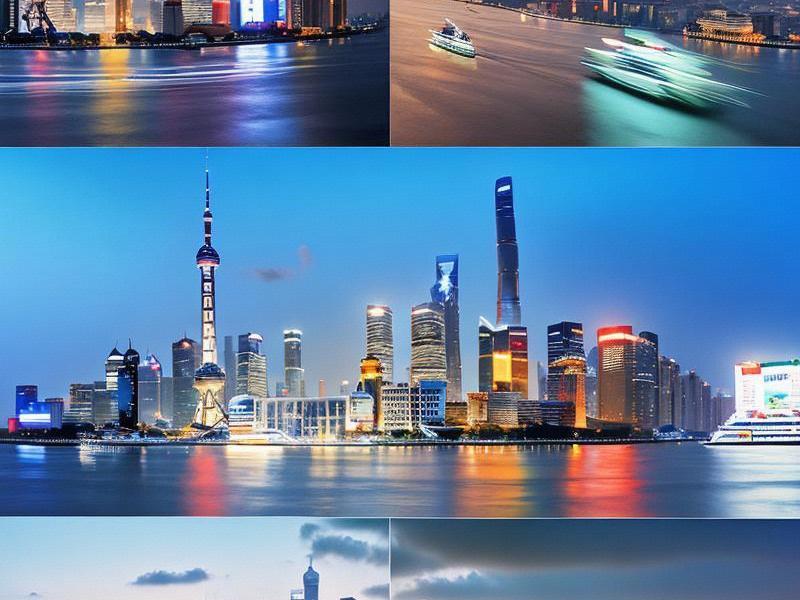This article delves into the vibrant city of Shanghai and its surrounding areas, exploring their unique characteristics, historical significance, economic integration, and cultural richness. Shanghai, as a global metropolis, is not only a symbol of China's rapid urbanization but also a hub for international trade and culture. The surrounding areas, including Jiangsu and Zhejiang provinces, contribute significantly to this dynamic region.

Introduction
Shanghai, located on the eastern coast of China, is one of the most populous and economically significant cities in the world. Known as the "Pearl of the Orient," Shanghai has transformed from a small fishing village into a global financial center. Its surrounding areas, particularly Jiangsu and Zhejiang provinces, are integral to the city's development, offering a blend of traditional Chinese culture and modern urban life.
Historical Significance
Shanghai's history dates back to the Song Dynasty when it was a small fishing village. However, it gained prominence during the 19th century as a treaty port following the First Opium War. The city became a melting pot of cultures, with influences from Western nations, which is evident in its architecture, cuisine, and lifestyle.
The surrounding areas of Shanghai have a rich history as well. Jiangsu province, known for its ancient water towns like Suzhou and Wuxi, has been a center of commerce and culture for centuries. Zhejiang province, home to Hangzhou, the capital of the Southern Song Dynasty, boasts stunning natural landscapes and historical sites.
Urban Development
Shanghai's urban development is a testament to China's economic growth. The city skyline is dominated by iconic structures such as the Shanghai Tower, the Oriental Pearl Tower, and the Jin Mao Tower. These skyscrapers symbolize Shanghai's status as a global financial hub.
爱上海同城对对碰交友论坛 The surrounding areas have also seen significant urbanization. Nanjing Road in Shanghai, one of the world's busiest shopping streets, attracts millions of visitors annually. In Jiangsu, Suzhou's ancient canals and classical gardens are juxtaposed with modern high-tech industries. Zhejiang's cities, such as Ningbo and Wenzhou, are known for their entrepreneurial spirit and rapid industrial growth.
Economic Integration
Shanghai serves as the economic engine of East China, driving the region's prosperity. The city is home to the Shanghai Stock Exchange, one of the largest in the world, and hosts numerous multinational corporations. Its free trade zone and advanced infrastructure make it an attractive destination for foreign investment.
The integration of Shanghai with its surrounding areas is a key feature of regional development. The Yangtze River Delta, which includes Shanghai, Jiangsu, and Zhejiang, is one of the most economically active regions in China. The development of high-speed rail networks and highways has facilitated seamless connectivity between these areas, promoting trade and tourism.
Cultural Heritage
Shanghai's cultural heritage is a blend of traditional Chinese elements and Western influences. The Bund, with its colonial-era buildings, offers a glimpse into the city's past. The Yu Garden and the City God Temple showcase traditional Chinese architecture and culture.
上海夜网论坛 The surrounding areas are rich in cultural treasures. Suzhou's classical gardens, such as the Humble Administrator's Garden and the Master of the Nets Garden, are UNESCO World Heritage sites. Hangzhou's West Lake, another UNESCO site, is renowned for its natural beauty and historical significance.
Modern Lifestyle
Shanghai's modern lifestyle is characterized by its cosmopolitan culture, vibrant nightlife, and diverse dining options. The city is a global fashion and art hub, hosting events like the Shanghai Fashion Week and the Shanghai International Film Festival.
The surrounding areas offer a mix of traditional and modern lifestyles. In Jiangsu, visitors can enjoy the tranquility of ancient towns while exploring high-tech industries. Zhejiang's coastal cities provide opportunities for water sports and seafood delicacies.
Environmental Challenges
Despite its rapid development, Shanghai and its surrounding areas face environmental challenges. Air pollution, water quality issues, and urban sprawl are concerns that need to be addressed. The government has implemented various initiatives to promote sustainable development, including green building standards and public transportation improvements.
上海品茶论坛 Future Prospects
The future of Shanghai and its surrounding areas looks promising. The city is expected to continue its role as a global financial hub, with ongoing developments in technology, finance, and trade. The integration of the Yangtze River Delta region will further enhance economic growth and regional cooperation.
Sustainable development will be a key focus, with efforts to address environmental challenges and improve the quality of life for residents. The preservation of cultural heritage will also remain a priority, ensuring that the unique characteristics of Shanghai and its surrounding areas are maintained for future generations.
Conclusion
Shanghai and its surrounding areas represent a unique blend of history, culture, and modernity. The city's rapid urbanization and economic growth have transformed it into a global metropolis, while the surrounding provinces offer a rich tapestry of traditional Chinese culture and natural beauty. The integration of these areas within the Yangtze River Delta region highlights the potential for further economic and cultural development.
As Shanghai continues to evolve, it remains a symbol of China's progress and a beacon of global connectivity. The challenges of environmental sustainability and urban planning will require innovative solutions, but the prospects for the future are bright. Shanghai and its surrounding areas are not just a part of China's story but also a significant chapter in the global narrative of urbanization and cultural exchange.